Compiling a life cycle inventory that will allow for life cycle assessments of marine ingredients using standard methodologies
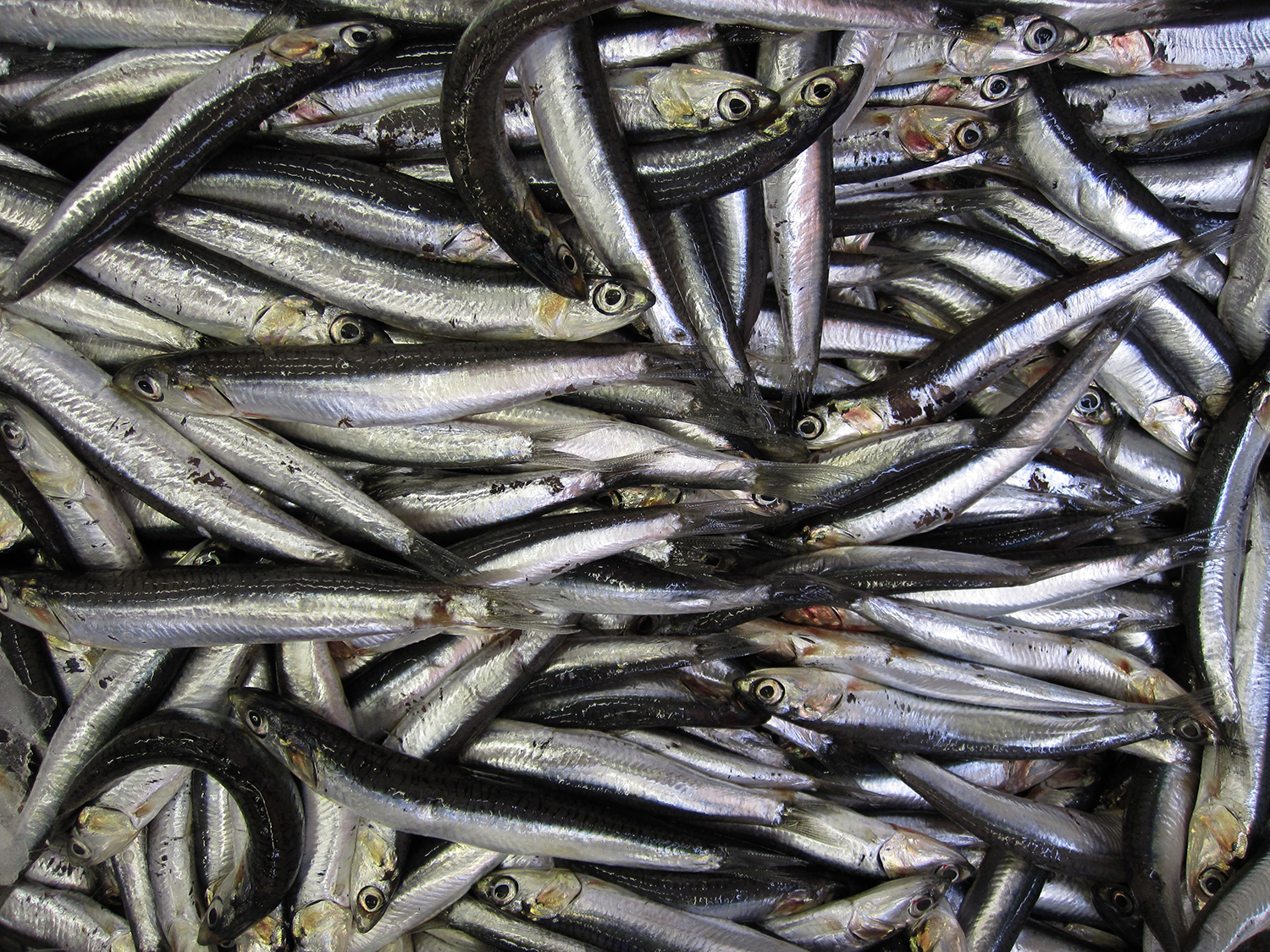
Marine ingredients are important within aquatic and terrestrial animal diets to provide macro- and micronutrients as well as important organoleptic properties that aid the digestibility and performance of formulated feed. Marine ingredients are most commonly meals and oils that are rendered from small pelagic fish and the by-products of fish and seafood processing. Marine ingredients were a central foundation of diets at the beginning of Atlantic salmon culture, providing good quality nutrition to the fish aligned with dietary requirements. Marine ingredients were also highly favored because they resulted in the final product being high in omega-3 fatty acids, that are highly beneficial in human diets. They are also considered important at various life stages, especially for juveniles of salmonids and other aquaculture species, and in chicken and pig diets for improving survival at critical life stages such as weaning.
The environmental impacts from aquaculture can be considered as local emissions at the farm site or global impacts that occur throughout the value/supply chain. Local impacts include specific aspects such as benthic organic and other nutrient enrichment, disease transfer to wild populations such as sea lice and genetic impacts from escapees. Global impacts are primarily a direct consequence of diet formulation and are usually accounted for using the Life Cycle Assessment approach (LCA). An LCA is an environmental impact accounting method which sums emissions of a production chain from “cradle-to-grave.”
According to ISO, 2006a, ISO, 2006b, Life Cycle Assessment studies should follow a set procedure including “Goal and Scope,” “Inventory Analysis,” “Impact Assessment” and “Interpretation.” The Goal and Scope lays out the boundaries of the study, the audience and important methodological decisions such as allocation and functional unit. Since this article is a Life Cycle Inventory (LCI; a phase of an LCA compiling data to quantify resource use and emissions for each process in the defined system) intended as a data source for other practitioners, many of the methodological decisions remain open (including allocation) because provisions are made to allow for a number of methodological choices depending on the objectives of subsequent studies. However, we have chosen to validate the inventory within a short Impact Assessment section with some subsequent interpretation within the discussion.
Despite the importance of MIs in aquafeeds and other formulated diets, there is little Life Cycle Inventory information available that could be used for constructing LCA models. Therefore, this article – adapted and summarized from the original publication (Newton, R.W. et al. 2022. Life Cycle Inventories of marine ingredients. Aquaculture Vol 565, 25 February 2023, 739096) – provides a comprehensive data set of marine ingredients LCIs to produce mass or economically allocated LCAs.
Study setup
The library/database of LCI data for the MIs were built from an extensive analysis of relevant literature complemented with primary data as follows: 1) fisheries data (LCA, environmental impact, and energy and fuel consumption studies) related to marine ingredient raw materials taken exclusively from literature resources (pelagic purse seiner, mid-water and demersal trawling), 2) processing data from a mixture of primary data collection and literature resources, 3) rendering data sourced from literature sources (Fig. 1). This library was then demonstrated based on economic considerations.
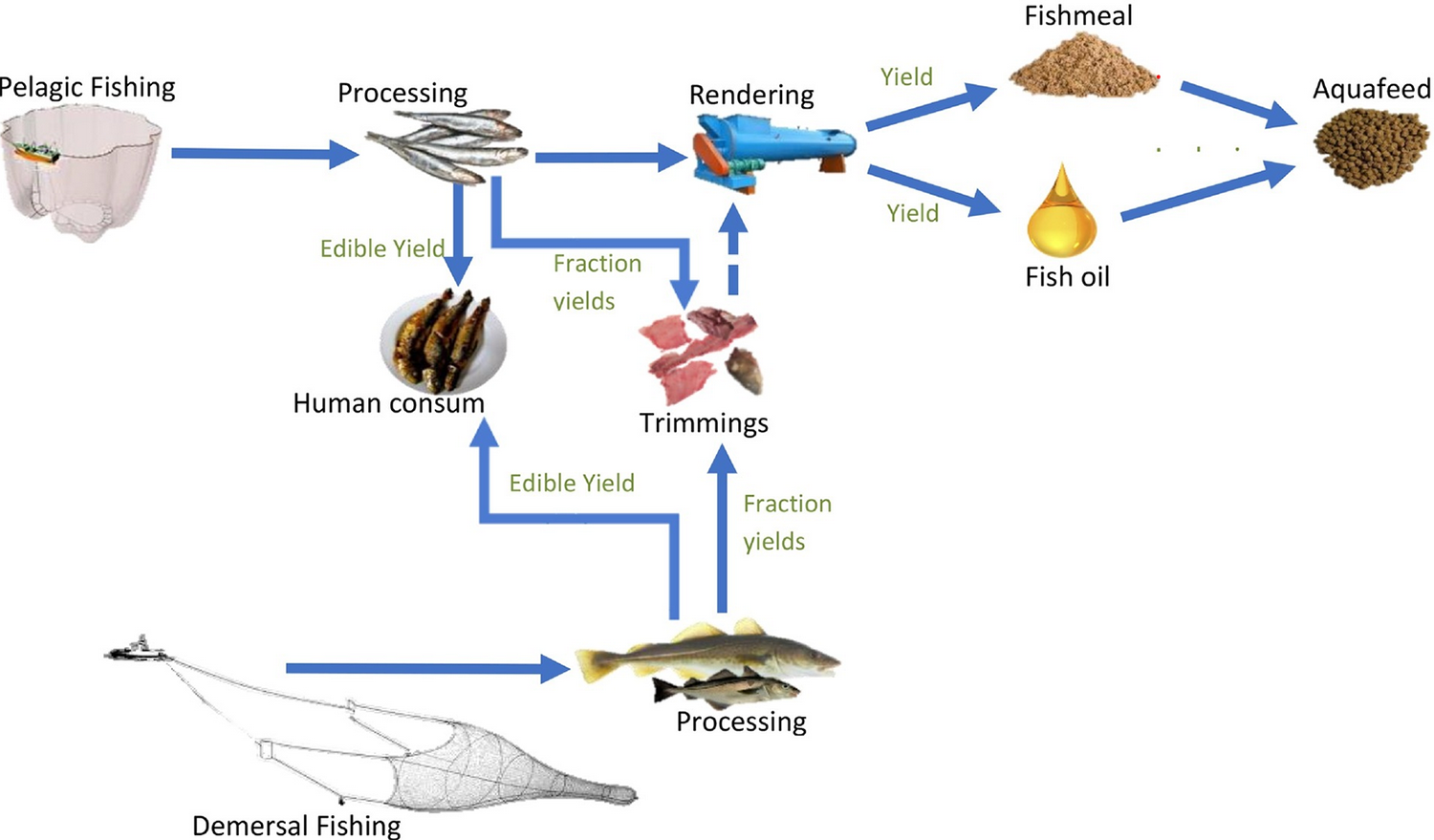
For detailed information on the study design, and data collection and analysis, refer to the original publication.
Results and discussion
Results of the LCIA were broadly in agreement with other publications that present environmental impact assessments of marine ingredients. While these typically have lower environmental impacts than terrestrial ingredients according to commonly applied LCA impact categories, the scope for expanding sustainable marine ingredient supplies depends on the ability to valorize underutilized seafood by-product resources. This is likely to be a slow process due to a range of logistical and legislative factors, including decentralized processing and regional consumer product preferences. However, given their importance, sustainable marine ingredient supplies should remain part of the growing pool of ingredients available, with marine ingredient applications targeted strategically to where they are most effective.
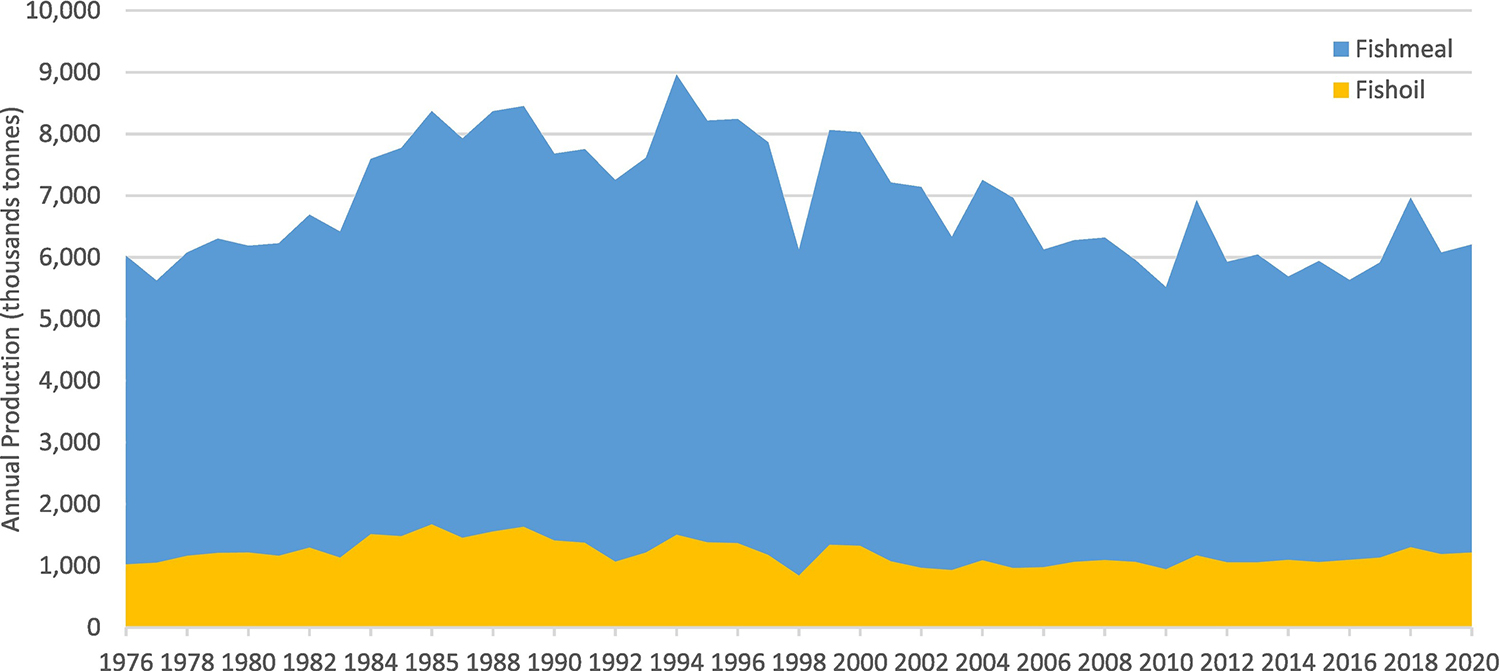
There is a large range of impacts related to different sources of marine ingredients and they should not be treated as a single entity, but rather modeled individually. Clearly, low trophic pelagic species and their by-products have the lowest environmental impacts according to traditional LCA impact categories. Danish marine ingredients tend to have much higher footprints than other European marine ingredients, generally due to higher fuel intensity, but the data that underpins the analysis was the oldest and improvements may have taken place since, either through vessel improvements and/or fishing practices.
Constant improvement continues within the fisheries sector, highlighting the importance of regularly updating LCI data. Greer et al. reported an estimated improvement in fishing boat engine efficiency of around 20 percent between 1950 and 2016. Improvements in technology and gears have also occurred and continue to be an important R&D focus, enabling more efficient targeting of fish stocks, although this has in turn often exacerbated stock decline. However, Parker et al. and other researchers have demonstrated that fishing effort is closely related to stock status, which is highly variable between fisheries and species. While not all fisheries improvements are relevant to marine ingredients, there have been innovations in some purse seine fisheries such as the phasing out of metal halide lighting in favor of much more efficient LEDs to attract fish shoals, and more general improvements to net design and strength, navigation and fish finding equipment.
Circular economy: Hydrolysates of aquaculture byproducts as feed
Within our data set, Danish herring and mackerel meals were especially highly impacting compared to the same species from other countries. This was due to higher fuel use across all fishery types, including high fuel-intensity demersal and mixed fisheries that contribute to the overall herring and mackerel national catch. Norwegian herring and mackerel are also derived from mixed fisheries in different amounts but generally have lower fuel intensities than similar Danish fisheries. However, although the inclusion of metrics like FIFO and others can give an indication of efficient use of MIs, LCA assessments do not consider the status of fisheries and the extent of their sustainable exploitation. These considerations must be made separately, perhaps using stock assessments provided by the Sustainable Fisheries Partnership.
SFP assessments are linked to Marine Stewardship Council performance indicators that provide the criteria for assessments which in turn provides certification for MIs required for major international aquaculture certification organizations such as Best Aquaculture Practices (BAP) and others. Certification organizations are increasingly looking to include LCA type metrics into their assessments to support climate action, so the incorporation of robust LCI data is essential.
Such certification organizations have been concerned with the utilization of “forage fish” as inputs into aquaculture for many years, typically measured by the fish-in-fish-out (FIFO) ratio. Certification agencies have generally encouraged the use of byproduct resources in marine ingredients by discounting their use in the various FIFO calculations employed. However, there are concerns that low-yielding and inefficient byproduct commodities get a “free pass” compared to more efficient feed ingredients.
Employing FIFO alongside LCA impact categories allows comparison between trade-offs of different marine ingredients against other ingredients in aquaculture LCAs. Although byproduct marine ingredients often have a lower environmental impact (when using economic allocation), their quality can sometimes be lower than those derived from whole forage fish, particularly regarding ash content. However, although there are concerns that quality differences may affect performance, this is not always borne out as protein and energy digestibility vary compared to forage fishmeals in diets for different aquaculture species.
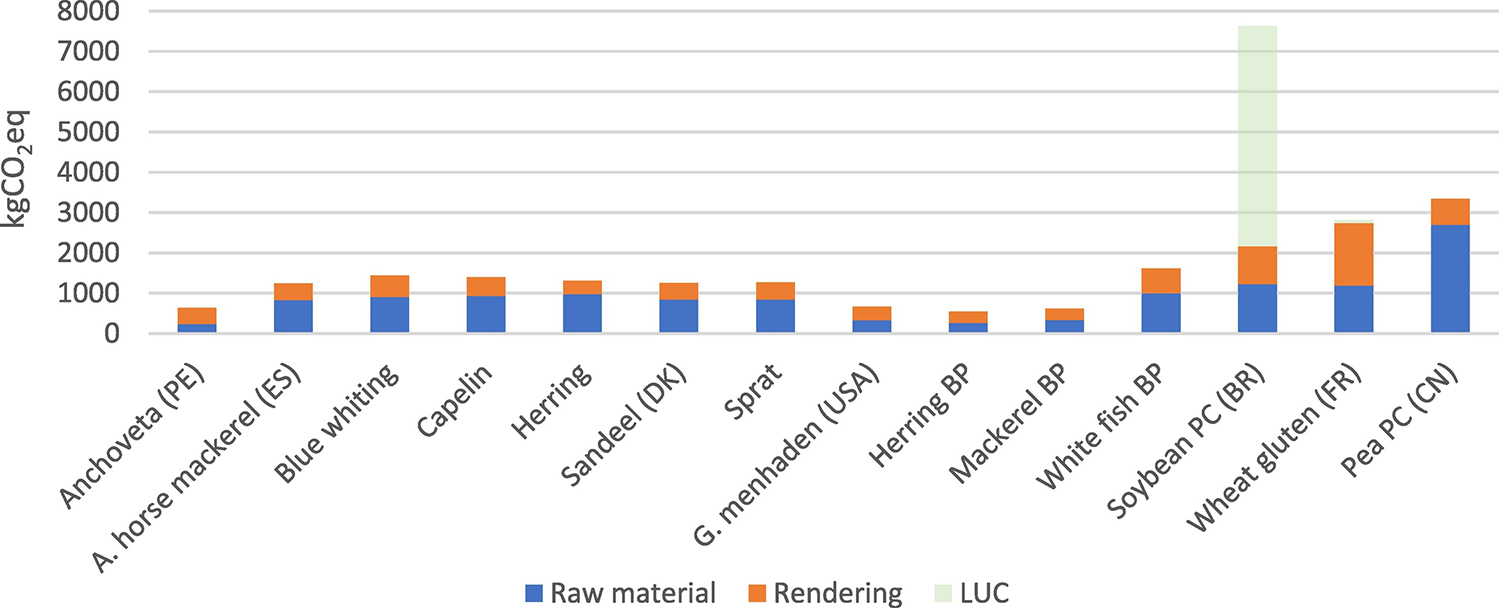
The LCI data provided here is a much-needed step in providing the necessary capacity to inform better LCAs of aquaculture that can meet the various requirements for different standardized assessments such as the EU Product Environmental Footprint Category Rules (PEFCR) and others. However, the data presented in this article relies heavily on default values derived from horizontal averaging of data from similar industries, particularly: processing of fish to produce by-product raw materials; rendering data for most species; fisheries composition data and boat construction and maintenance for various fishery species across broad geographies.
A specific data gap exists on purification of fish oil that may contain contaminants, which is especially a problem where fisheries are located close to heavily industrialized areas such as north European sea routes. While this inventory is a much-needed improvement on existing data, representing an estimated 48 percent of global supplies according to the Food and Agriculture Organization of the United Nations (FAO), better primary data on Asian fisheries would be desirable. Chinese, Thai, Vietnamese and Japanese fisheries constitute a further 26 percent of global marine ingredient supplies; considering the contribution of Asian aquaculture to global seafood supplies, it should be regarded as a matter of priority to characterize its supply chains.
There is also growing concern over the accumulation of microplastics in fishmeal, which may also require addressing in the future. LCIs for marine ingredients could be much improved with further primary data collection, particularly from fish processing and rendering and should be a priority for the industry.
Perspectives
As the demand for aquaculture produce increases, there are considerable efforts to reduce the reliance on marine ingredients in aquafeeds. However, marine ingredients will probably remain important and there is potential to increase the pool of sustainable marine ingredients through continued fishery management and valorizing underutilized fishery and aquaculture byproducts.
This article provides the ability to include more holistic sustainability assessments of marine ingredients and has demonstrated that there are considerable sustainability trade-offs between aquafeed ingredients that should be considered when assessing aquaculture nutrition. However, much more work is required to improve and widen the database to include global marine ingredient supplies that are important for world aquaculture production.
Now that you've reached the end of the article ...
… please consider supporting GSA’s mission to advance responsible seafood practices through education, advocacy and third-party assurances. The Advocate aims to document the evolution of responsible seafood practices and share the expansive knowledge of our vast network of contributors.
By becoming a Global Seafood Alliance member, you’re ensuring that all of the pre-competitive work we do through member benefits, resources and events can continue. Individual membership costs just $50 a year.
Not a GSA member? Join us.
Authors
-
Richard W. Newton, Ph.D.
Corresponding author
Institute of Aquaculture, University of Stirling, Stirling FK9 4LA, UK[107,117,46,99,97,46,114,105,116,115,64,110,111,116,119,101,110,46,100,114,97,104,99,105,114]
-
Silvia Maiolo, Ph.D.
PFC srl, Via Raffaello Morghen 5, 10143 Torino, Italy
-
Wesley Malcorps
Ph.D. student
Institute of Aquaculture, University of Stirling, Stirling FK9 4LA, UK -
David C. Little, Ph.D.
Institute of Aquaculture, University of Stirling, Stirling FK9 4LA, UK
Tagged With
Related Posts
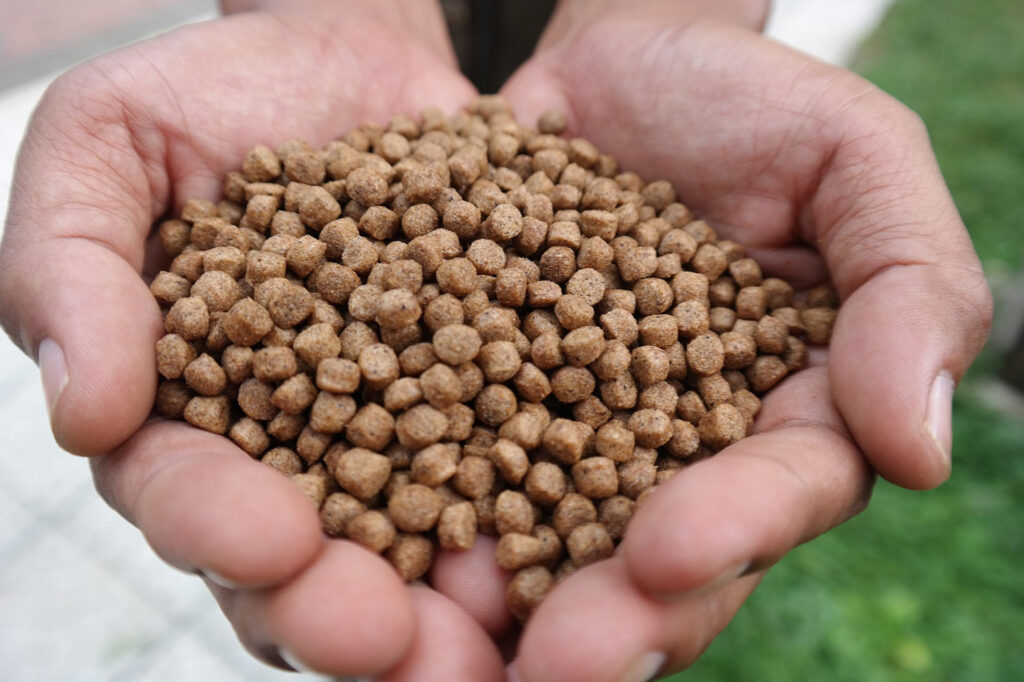
Aquafeeds
A primer on sustainable feeds: Improving aquafeeds for sustainability, fish welfare and human nutrition
Improving aquafeed formulations can augment the sustainability and efficiency of aquaculture production – a new series from the GAIN project.
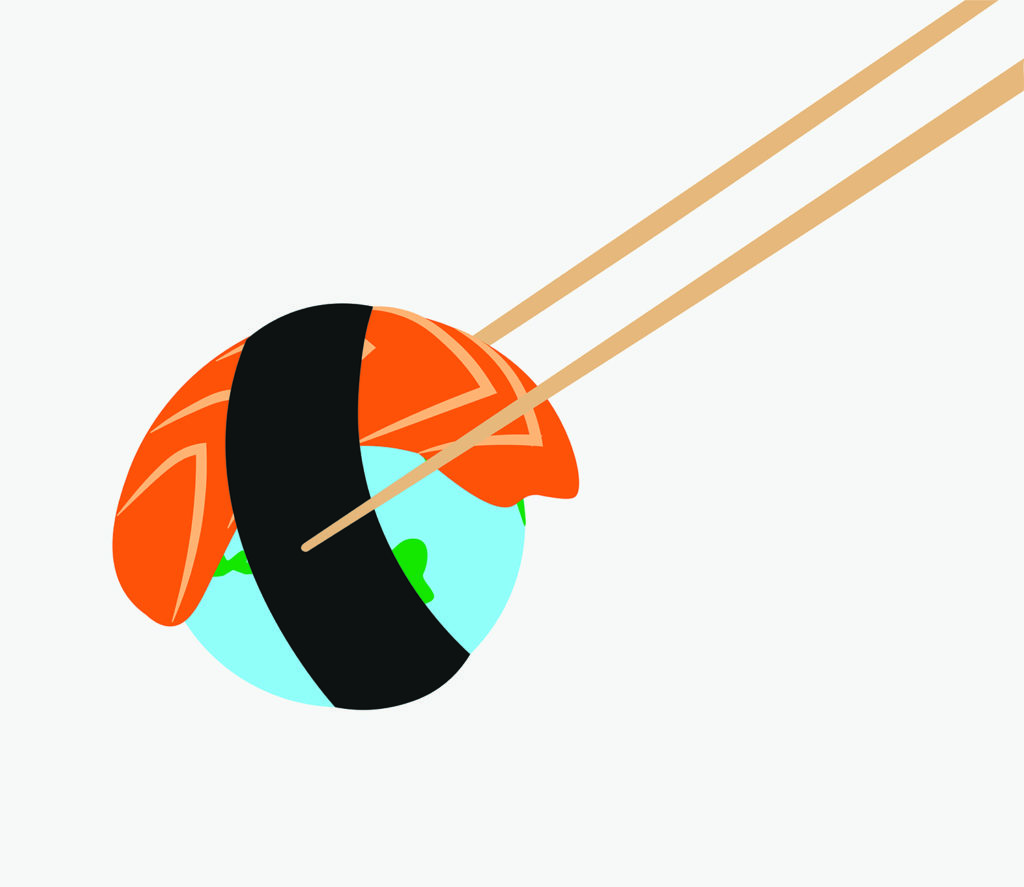
Responsibility
A wider view: Consensus on seafood’s planetary and human health benefits
Several recent reports echo the message that eating sustainable seafood can help save the planet while making significant gains in public health.
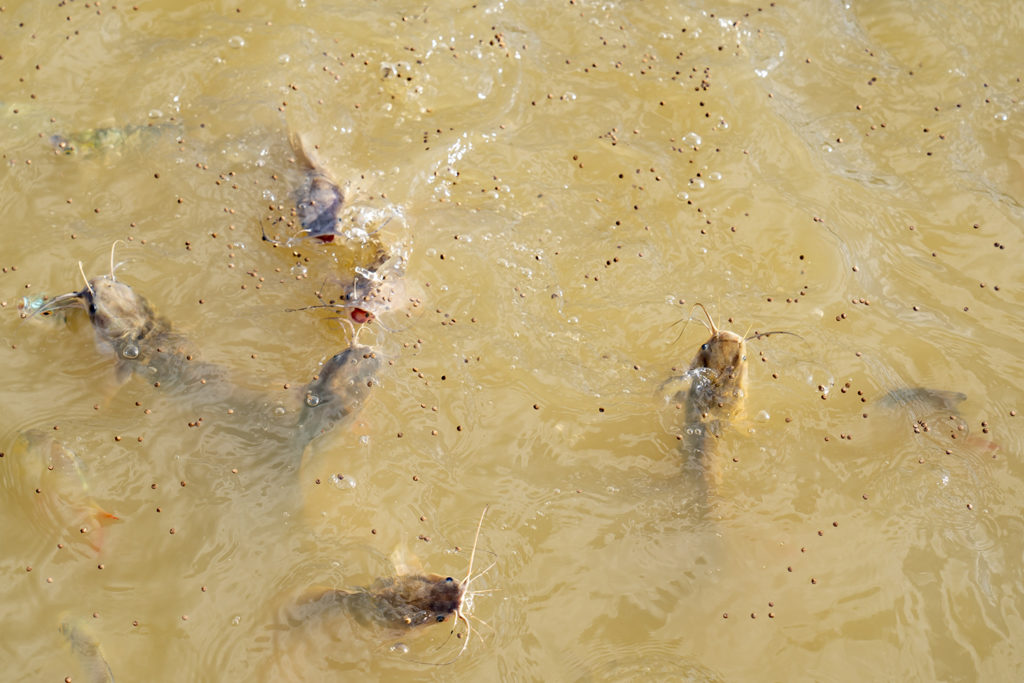
Aquafeeds
‘We will very likely find it’: Microplastics warning sounded for aquafeeds
The warning about microplastics pollution is finding its way to aquaculture, as a new study finds contaminated samples of fishmeal, a prominent aquafeeds ingredient.
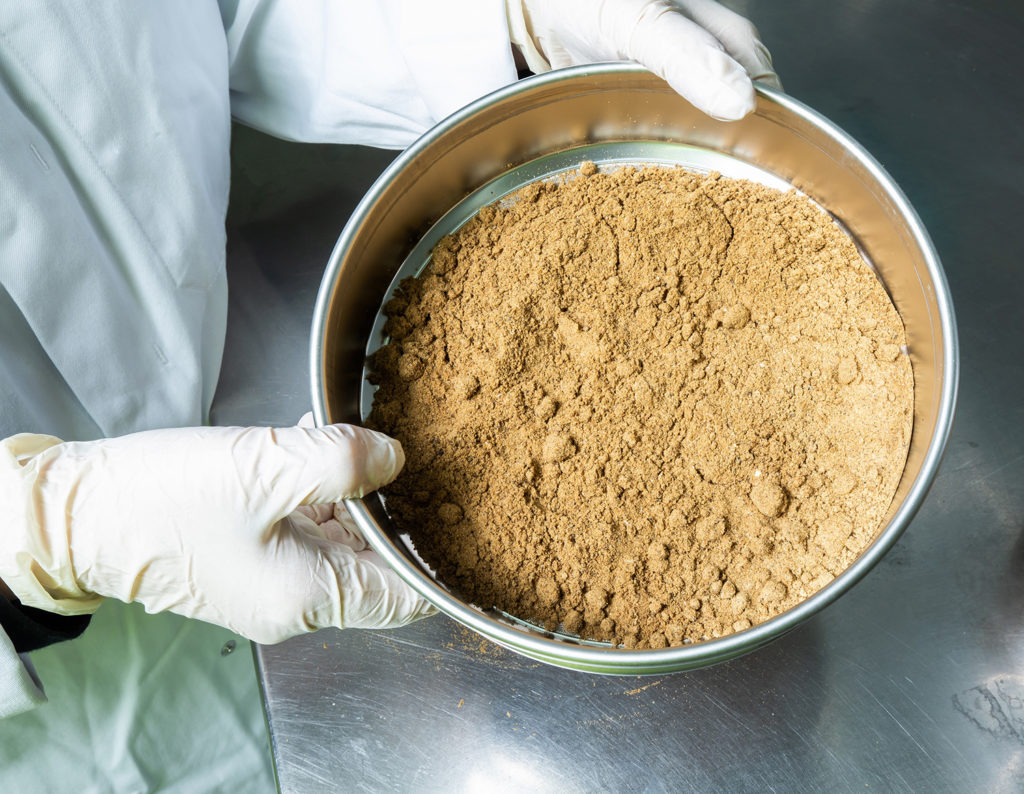
Aquafeeds
Counterpoint: Marine ingredients are stable in volume, strategic in aquaculture nutrition
IFFO Director General Petter M. Johannessen says fishmeal and fish oil offer unmatched nutrition and benefits to fuel aquaculture’s growth trajectory.



